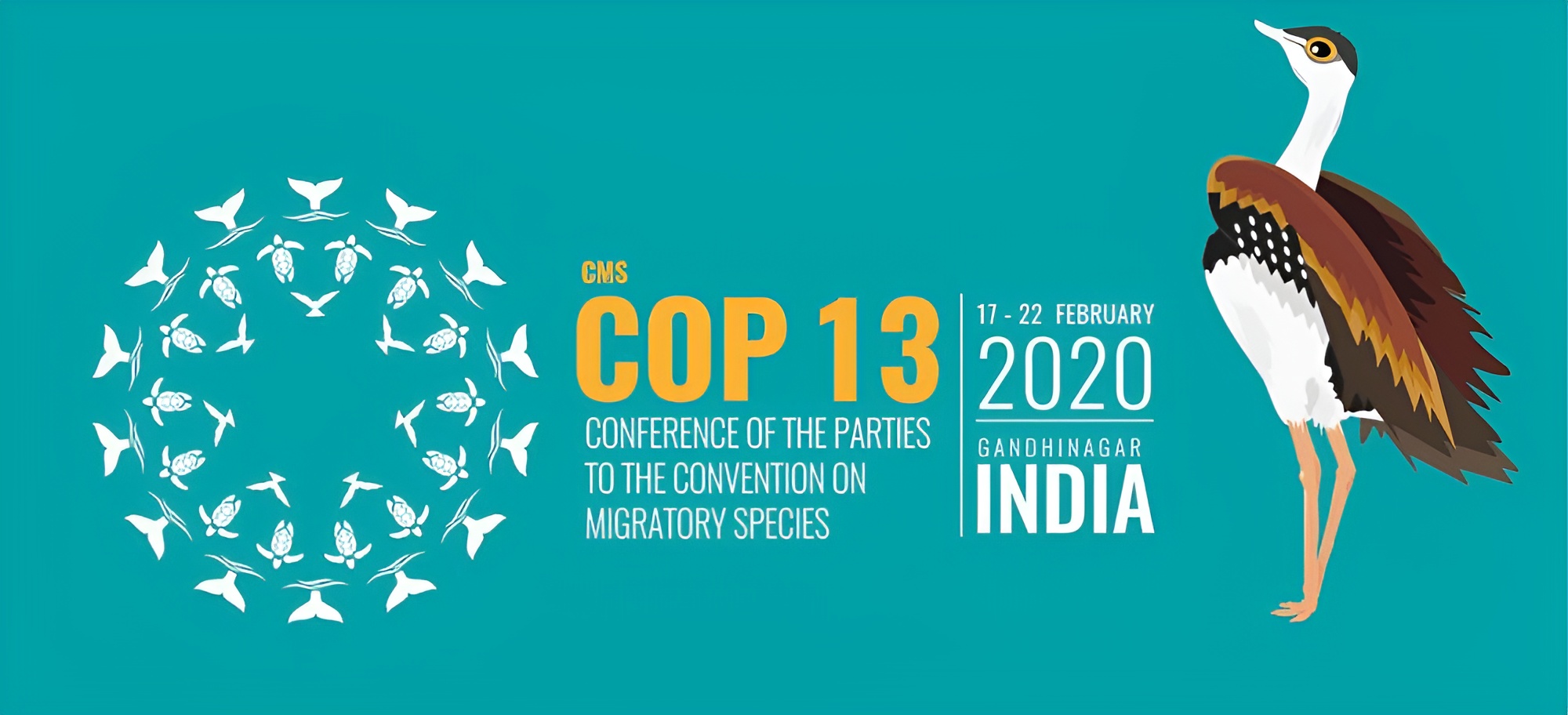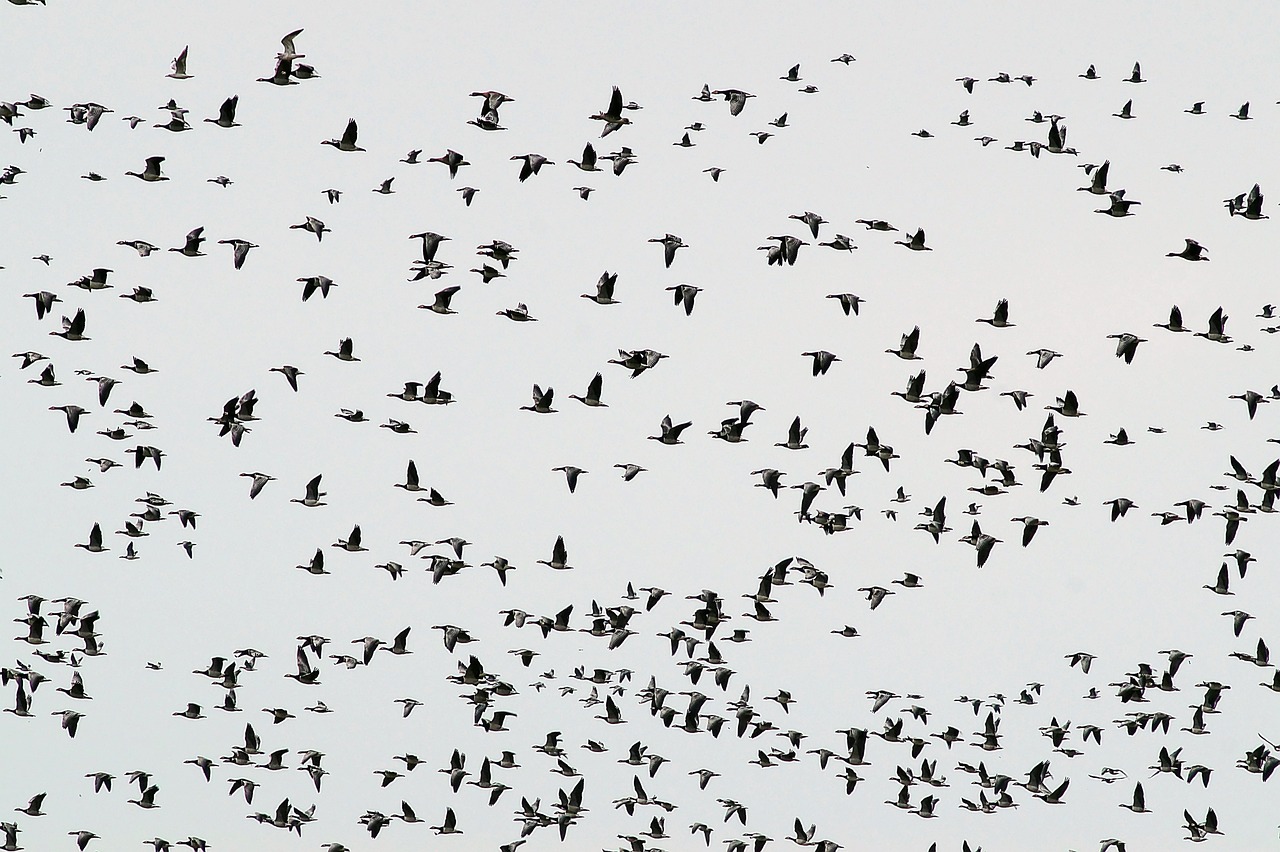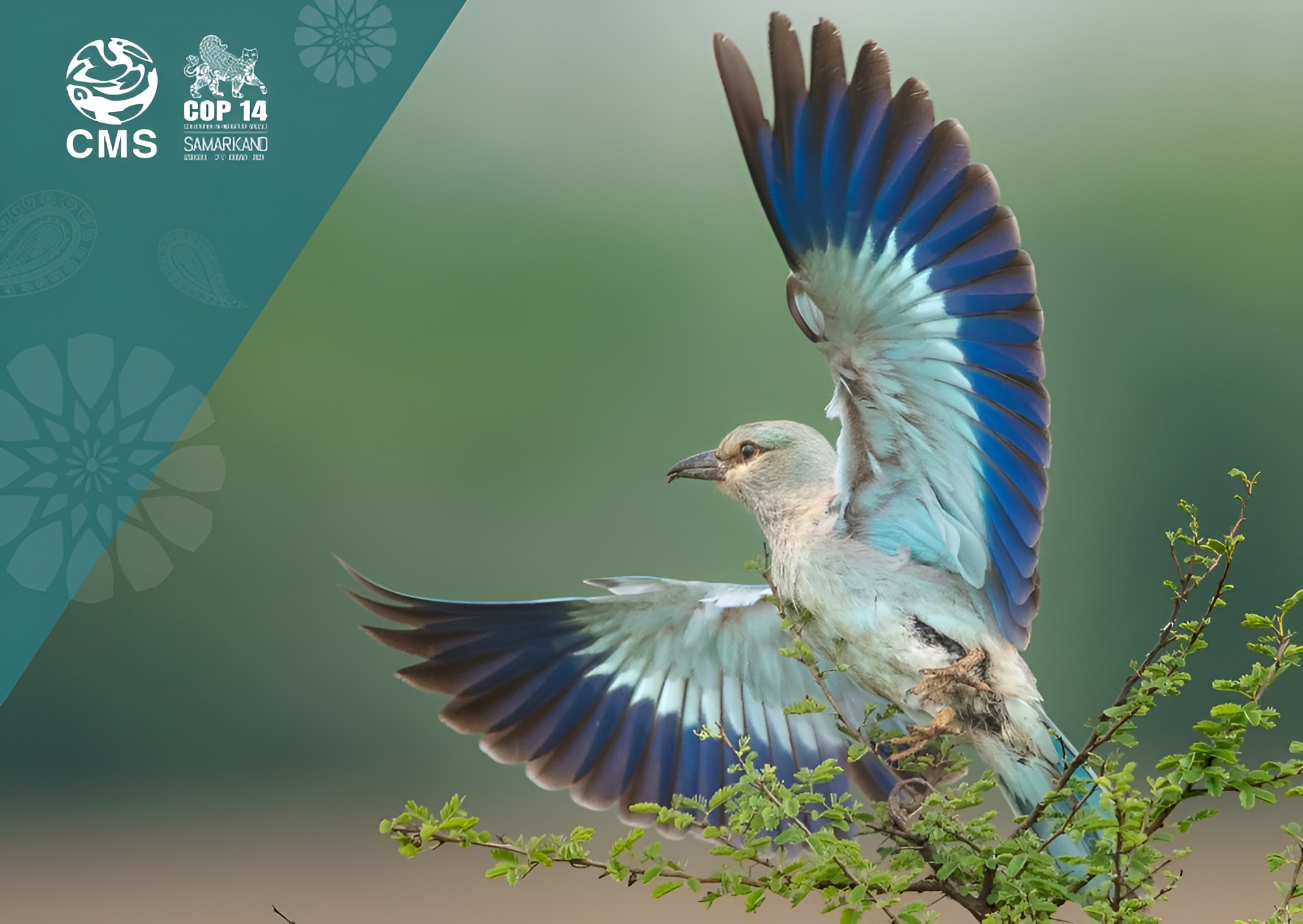CMSCOP14: Birdwatching can help humans cope with climate change
‘Nature knows no borders’ is the slogan for the most important UN wildlife conference this year. The 14th Meeting of the Conference of the Parties to the Convention on Migratory Species of Wild Animals CMSCoP14 will be hosted by the Government of Uzbekistan in the historic city of Samarkand from February 12-17.

The 14th meeting of CMS, called CMSCOP14, opens in Tashkent today
The location of the meeting is ideal in many ways and the delegates representing 133 nations that gather in Samarkand would do well to look up in the skies for inspiration on how to deal with the challenges that climate change is bringing for the planet, both for humans and other living beings, including the migratory wildlife species.
The location is ideal since Uzbekistan is a flyway with cross-roads for many migratory bird species between northern Europe and their wintering grounds in Africa and Asia. If the delegates actually took the time to study the behaviours of these migratory birds, then they would be able to decipher the numerous coded messages on protection of environment and very importantly for us humans, on how to deal with the impact of climate change that is being seen all over the world, increasingly round the year.
For millions of years, these migratory birds have been carrying messages of state of environment in Europe in North to Asia in East and down to Africa in south and back again. But unfortunately, we humans have never understood these messages and instead just spent time in ‘birdwatching’.
Let us hope that the delegates at the meeting in Samarkand will finally understand that language and decide on which migratory species need greater conservation action and how to coordinate efforts to protect birds, mammals, reptiles, fish and insects as they cross borders from one nation to another.
Migratory birds do not recognise national borders and they move freely all around the globe without any visa. There is lot to learn from birds’ migration, firstly on how to adapt to overcome climate changes, scarcity of food and water. Observation on such climate-based migration could be useful for humans in coming years when millions have to migrate due to climate crisis as per scientists of Intergovernmental Panel on Climate Change (IPCC), the leading organisation mandated by UN to track climate change. Secondly, the birds continue to help other animals even in adverse conditions!
Varieties of migratory birds play critical role acting as pest control agents by devouring insects and other organisms that harm the environment and crops on their way. Locust attacks are common in South Asia and Africa. Diminishing population of birds has aggravated locust crisis.
Migratory birds also help in dispersing the seeds, leading to biodiversity along their routes. Their contribution to biodiversity is however not properly documented and hence little is known about the impact they have in preserving biodiversity on the planet. For instance, ducks transport fish eggs in their digestive tracts to new water bodies that get enriched in essential minerals for fish to grow! That is just one of the way in which the birds give back to the nature. Then their droppings also help in regeneration as they are rich in nitrogen and act as natural or organic fertilisers.
Migratory birds therefore serve as indicators of the state of environment in an area.
Across the world, the arrival and departure of migratory species is important to many people, particularly rural farmers, whether in the United Kingdom, India, South Africa or China. In UK and Europe, the call of the cuckoo marks the arrival of spring and the swooping of swallows and swifts signifies summer, but these birds spend their winters in Africa feeding on insects whose life cycles are ecologically linked to elephants, apes and lions.
Hence, when one looks at conservation of migratory species, it is no good conserving their habitat in one country, say in the UK without considering the threats faced by the same migratory birds when they spend half the year elsewhere.

Swift birds can fly thousands of km without touching ground
The example of the swifts Apus apus pekinensis nesting in the Imperial Palace in Beijing springs to the mind. Swifts are a family of birds, the Apodidae, which are the fastest in the world and spend 10 months of the year on the wing, without landing! To study these swifts, researchers fitted geolocators to several birds and discovered their remarkable routes flying all the way to South Africa and back without once touching the ground! Four species of swift are being considered for potential listing on the CMS appendices, but not yet the Common Swift, though there is concern over its declining population, likely due to decline in insect numbers being reported in many parts of the world.

CMSCoP13 was held in India in 2020
India, which hosted the last CMS CoP in 2020, is also important for migratory species, such as elephants and tigers on land, whales, turtles and sharks in the Indian Ocean, and birds flying over, from Siberian Cranes to Greater Flamingoes and from Amur Falcons to Blue throats, the sub-continent provides a welcoming ground for them, whether their seasonal habitat or transition-halts enroute to elsewhere.
India is fortunate that birds from 29 countries fly to the country every year. Yet, rapid development and urbanisation is causing disruption in their migratory routes and disturbing their habitats in India, notably those near large cities or the coast, where uncontrolled construction has damaged the places where the birds come for breeding.
Some of even the essential construction like windmills and telecommunication towers or airplane flight routes are not just causing obstruction but are also responsible for fatal blows to the migratory birds.

Migratory birds can teach lessons on survival to humans
While birds seek breeding grounds, university campuses are breeding grounds for researchers on science of bird-migration. We have not only understood their language but we also do not know fully their behaviour patterns. How do birds find their destination without Google Maps, how do they communicate with each other in planning and halting without internet and iPhones?
Keeping track of the migratory birds visiting the university campus to understand how the climate change would impact the migration of birds , how the sustainable development that include clean energy like windmills would affect the routes of migratory species , how biodiversity loss would adversely change the population of the migratory birds are among the subjects being promoted for the research in the universities across the globe. They include Beijing University, Royal University of Bhutan, University of SJP in Sri Lanka, HNB Garhwal University in India that are in the network of University campus for the Sustainable Development Goals and Net Zero established by Green Terre Foundation. We also encourage other universities to join the network.
CMS, meanwhile, helps make the world a safer place for migratory species all along their flyways, swim-ways or pathways, whether between neighbouring countries or at the opposite ends of the earth.
By: Ian Redmond, Ambassador for CMS, Borne Free Foundation and Head of Conservation for Ecoflix and Rajendra Shende, Former Director UNEP, Founder Director of Green TERRE Fondation. The views expressed are those of the authors and do not necessarily reflect those of Media India Group.










